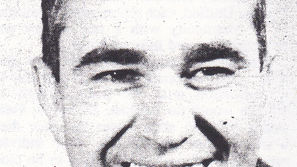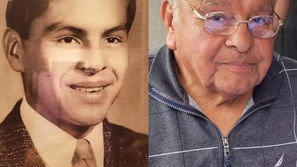Wallace Emmert dead at 101
- Bill Coate
- Jun 21, 2017
- 4 min read
Courtesy of Pat Manning
Far left and right, Wallace E. Emmert. Center, His B-17 Bomber after it crashed in Holland in 1943.
Madera has lost another member of its Greatest Generation. Wallace E. Emmert, local farmer, school board member, and hero in World War II, died on June 15, 2017, at the age of 101, and with his passing, an extraordinary chapter in the book of local war heroes is closed.
Emmert was a member of a pioneer Madera farming family, born Oct. 26, 1915. He was the third child born to Charles and Ethel Emmert. He had two older brothers, Keith and Francis, a younger sister, Corrine, and the baby of the family, Charles.
After Wallace graduated from Madera High School, the United States entered WWII. He joined the Army and by Oct. 8, 1943, the 26-year-old Emmert was on a B-17 headed for Bremen, Germany, to drop a payload of a dozen 500-pound bombs on the Nazis. Wallace was the pilot, and his co-pilot was 19-year-old Robert Fortnam.
They were never able to drop their bombs. They were somewhere over Holland, when they met German fighters. They had lost their own fighter escorts because the P-47s could not fly more than 50 miles into Europe from England. In a short time, the Americans were taking fire from the Nazi aircraft.
One Nazi fighter met them head on and fired into the cockpit of the American plane. Two bullets struck Emmert—one just under the heart and the other through his arm, severing his oxygen hose. They had to turn around and crash-land in Holland.
Emmert remembers the bullets coming through the instrumental panel and hitting him, but Fortnam, for awhile, wasn’t aware that he had lost his pilot. He and Emmert were taking turns flying the plane. It was when he checked the gauges to his left that Fortnam saw that nobody was in the pilot’s seat. To make matters worse, when he looked back, he saw that the engine to his immediate right (number 3) was on fire. Fortnam shut the engine down and called out to see if anyone had seen Emmert.
The plane’s navigator found the wounded pilot in the crawlway under the cockpit, unconscious. He had gone down there for a portable oxygen tank. First aid was applied and they revived Emmert, who was already turning blue.
At that point, Fortnam turned the aircraft around to head back when the engine on his right (number 2) “ran away” and had to be shut down. Then the number 4 engine was hit and lost half of its power. That left the crew attempting to return to base with 1½ engines.
As the plane limped along losing attitude, Emmert, who had returned to the cockpit, and Fortnam determined they could not make it back. They wanted to ditch the plane in the North Sea, but didn’t have the power. Instead, they crashed landed among the lowlands of Holland.
According to Emmert, Fortnam made a perfect belly landing, with the 6,000-pound payload still in place in the bomb bay.
Shortly, some nearby Dutch villagers showed up and told them that they would help the wounded, so everybody but Emmert and the tail gunner, who was also wounded, left the plane. They split up into pairs and headed out to meet their fates. Emmert and the tail gunner remained with the plane.
After three days, Emmert and the tail gunner were captured at their ditched plane by two German soldiers and three or four Dutchmen. Emmert was taken to the Queen Wilhelmina Hospital in Amsterdam where he had several operations.
Emmert remained in Amsterdam until Dec. 31, 1943, when he was put on a train and taken to another hospital in Obermassfeld, Germany, for additional medical treatment. While he was there, the German who was in charge of the compound committed suicide.
In September 1944, Emmert learned that he was going to be expatriated in a prisoner of war exchange. He was taken through Germany, where he saw firsthand some of the destruction the U.S. military had wreaked on the Nazis. He wound up in Sweden where he boarded a POW exchange ship, the Gripsholm Sverige.
Emmert docked in New York and boarded a train for California. He traveled across the country to Palm Springs. From there he hitchhiked back home to Madera, where his family welcomed him with a huge party.
On Christmas Day, 1944, Wallace married his high school sweetheart, Eleanor Madden, after which they traveled to an Army base in Washington for further treatment.
Meanwhile he prepared to return to farming with his father. In a letter written while he was in Washington, he made a special request. He told his father that he would like to build a 1,000-foot runway on the farm. Apparently Wallace wasn’t finished with flying yet.
Wallace Emmert spent the next 30 years in farming. Eleanor passed away in 1982, and a few years later he married her sister Maxine. They were married for 32 years. In the years that followed the war, Wallace and Maxine Emmert could be seen sitting together holding a treasure from World War II. In their laps was a scrapbook emblazoned with an eagle looking down on a B-17 in flight, and inside were letters Wallace sent home from the war and kept by his mother—letters of a young hero from Madera who never imagined he would look back on his war-time experiences from the perspective of 100 years.
Services for Wallace Emmert will take place Thursday, June 22, at 11 a.m. at Jay Chapel, 1121 Roberts Avenue.


























Comments